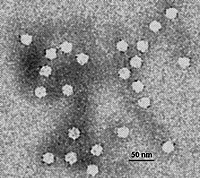
Photo from wikipedia
The effect of potassium (K) concentration gradient on stable caesium (Cs) uptake by Calla palustris was studied under hydroponic conditions after eight-day exposure in a greenhouse experiment. The plants were… Click to show full abstract
The effect of potassium (K) concentration gradient on stable caesium (Cs) uptake by Calla palustris was studied under hydroponic conditions after eight-day exposure in a greenhouse experiment. The plants were exposed to two different concentrations of Cs (provided as 0.5 and 1 mM CsCl) and five different concentrations of K (provided as K2SO4 in 0.5, 1, 2, 5, and 10 mM). The results indicate negative dependence of Cs uptake on K concentrations for both Cs treatments. The application of K reduced the transfer of stable Cs from water to plant by about 44-72% for 0.5 mM CsCl and 56-74% for 1 mM CsCl. The highest efficiency of Cs removal from water was observed for plants in K+ deficient solutions (plants starving), with an efficiency 8.0% for plants cultivated in 0.5 mM CsCl and 9.4% for plants in 1 mM CsCl. An increasing concentration of K also supported translocation of Cs from roots to leaves. Higher translocation was observed for the treatments with lower level of Cs, where the concentration of Cs in leaves became higher than that in roots. The Cs uptake and translocations were affected not only by the external concentration of K, but also the external concentration of stable Cs. A high concentration of K in the environment protects the food chain from Cs uptake by plants, but lowers the efficiency of phytoremediation techniques.
Journal Title: Ecotoxicology and environmental safety
Year Published: 2018
Link to full text (if available)
Share on Social Media: Sign Up to like & get
recommendations!